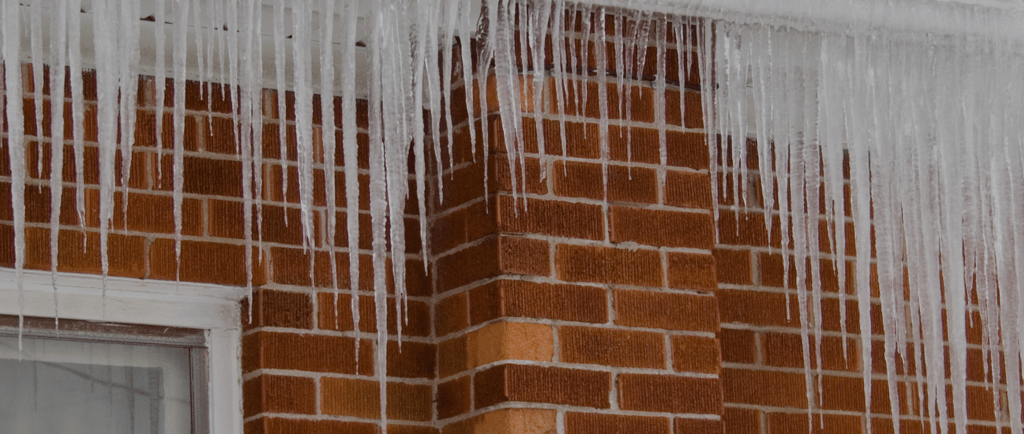Understanding Ice Damming: What It Is and How to Prevent It ❄️🏠
As winter settles in, homeowners in colder climates, like Manitoba, face the risk of ice damming—a common yet potentially costly issue for roofs. While snow may seem harmless, when it melts and refreezes, it can cause significant damage. This blog post will explain what ice dams are, how they form, the damage they can cause, and how to prevent them from occurring.
RESIDENTIAL


As winter settles in, homeowners in colder climates, like Manitoba, face the risk of ice damming—a common yet potentially costly issue for roofs. While snow may seem harmless, when it melts and refreezes, it can cause significant damage. This blog post will explain what ice dams are, how they form, the damage they can cause, and how to prevent them from occurring.
What Are Ice Dams?
Ice dams are ridges of ice that form along the edge of your roof, usually in the area where the roof meets the gutters. They occur when snow on the roof melts, typically due to heat escaping from your attic, and then refreezes at the cooler eaves. This cycle can create a buildup of ice that prevents proper drainage, trapping water behind it. This trapped water can seep under the shingles and into your home, leading to water damage in the ceilings, walls, and insulation.
How Do Ice Dams Form?
Snow Accumulation: A layer of snow accumulates on the roof, either from a snowstorm or continuing flurries.
Heat Loss From the Attic: The warmth from inside your home escapes into the attic, warming the roof’s surface. The heat causes the snow to melt from the roof’s middle.
Melting Water Runs Down: The melted water moves down the roof and reaches the colder edges of the roof, where the temperature is lower, causing it to refreeze.
Ice Buildup at the Eaves: As the water continues to melt and refreeze, an ice dam forms along the roof's edge.
Water Traps Behind the Ice Dam: Eventually, water backs up behind the ice dam, causing it to pool underneath the shingles, which can lead to leaks and damage inside your home.
What Damage Can Ice Dams Cause?
Water Leaks and Interior Damage: Once water gets trapped behind the ice dam, it can leak through shingles and under the roof, finding its way into the attic or even your home’s interior. This can cause ceiling stains, mold growth, and damage to drywall and insulation.
Roof Damage: The weight of the ice can damage shingles, gutters, and even the roof structure. Over time, the constant freeze-thaw cycles can lead to costly roof repairs.
Mold Growth: The excess moisture caused by ice dams creates an environment ripe for mold growth in attics, ceilings, and walls, leading to health concerns and higher repair costs.
How to Prevent Ice Dams
Preventing ice dams requires a combination of good home maintenance practices and roof care. Here’s how you can protect your home:
Improve Attic Insulation: Proper insulation in your attic is crucial for maintaining consistent roof temperatures. Insulation keeps heat inside your home from rising into the attic, where it can melt snow on the roof. Ensure your attic is well-insulated, particularly around the eaves and attic floor.
Ensure Proper Attic Ventilation: Adequate ventilation allows cold air to circulate in your attic, which helps to keep the roof cold and prevents snow from melting prematurely. Check that your soffit vents, ridge vents, and gable vents are clear of debris and functioning properly.
Clear Snow From Your Roof: After heavy snowfalls, it’s a good idea to remove the snow from the roof, especially near the eaves. If it’s safe to do so, use a roof rake or hire a professional to clear the snow. This helps prevent the snow from melting and refreezing, which is what causes ice dams.
Clean Your Gutters: Ensure your gutters are clear of debris like leaves and twigs. Clogged gutters prevent water from draining off the roof and can contribute to ice dam formation. Regularly clean your gutters to maintain proper drainage, especially before winter sets in.
Install Heat Cables: If you live in an area prone to ice dams, consider installing heat cables along the roofline. These cables help to melt snow and ice before it has a chance to refreeze, keeping the roof edge clear of ice.
Check Your Roof’s Condition: Make sure your roof is in good condition and that shingles are not cracked or missing. Damaged shingles can let water seep in, exacerbating the problem of ice dams. If your roof is older or showing signs of wear, it may be time for an inspection or repair.
When to Call a Professional
If you’re noticing signs of ice dams, such as water leaks or pools of water inside your home, it’s essential to call a professional for an inspection. Just Call Joe Inspections can help assess the damage caused by ice dams and provide recommendations for repairing and preventing further issues. Additionally, we can inspect your roof, attic, and insulation to ensure everything is in good condition and help you avoid costly damage in the future.
Ice dams are a common winter issue, but with the right precautions, you can prevent them from damaging your home. Proper attic insulation, ventilation, regular roof and gutter maintenance, and installing heat cables can all help protect your home from the harmful effects of ice dams.
Stay proactive this winter and make sure your home is ready to handle the cold, snow, and ice. If you’re unsure about your home’s ability to prevent ice dams, Just Call Joe Inspections is here to help with a comprehensive inspection and expert advice.